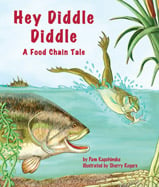Alignment to Standards for VA

| Grade | Number | Standard |
|---|---|---|
| 1 | SC-1.1c | objects or events are classified and arranged according to attributes or properties; |
| 1 | SC-1.5b | animal characteristics:body coverings, body shape, appendages, and methods of movement) |
| 1 | SC-1.5c | animal characteristics. Key concepts include other characteristics (wild/tame, water homes/land homes). |
| 2 | GEO-2.4c | comparing the climate, land, and plant life of these regions; |
| 2 | SC-2.1c | conduct investigations in which two or more attributes are used to classify items; |
| 2 | SC-2.5a | living things are part of a system. Key concepts include living organisms are interdependent with their living and nonliving surroundings; and |
| 2 | SC-2.5b | living things are part of a system. Key concepts include habitats change over time due to many influences. |
| 2 | SC-2.8c | Plants importance Key concepts include plants provide homes and food for many animals and prevent soil from washing away. |
| 3 | SC-3.10a | Key concepts include the interdependency of plants and animals; |
| 3 | SC-3.4a | animal adaptations: methods of gathering and storing food, finding shelter, defending themselves, and rearing young; |
| 3 | SC-3.4b | animal adaptations: hibernation, migration, camouflage, mimicry, instinct, and learned behavior. |
| 3 | SC-3.5a | food chains. Key concepts include producer, consumer, decomposer; |
| 3 | SC-3.5b | food chains. Key concepts include herbivore, carnivore, omnivore |
| 3 | SC-3.5c | food chains. Key concepts include predator and prey. |
| 3 | SC-3.6a | environments Key concepts include water-related environments (pond, marshland, swamp, stream, river, and ocean environments); |
| 3 | SC-3.6c | environments Key concepts include population and community. |
| 4 | SC-4.5b | plants and animals in an ecosystem Key concepts include organization of communities; |
| 4 | SC-4.5c | Key concepts includeflow of energy through food webs; |
| 4 | SC-4.5d | Key concepts include habitats and niches; |